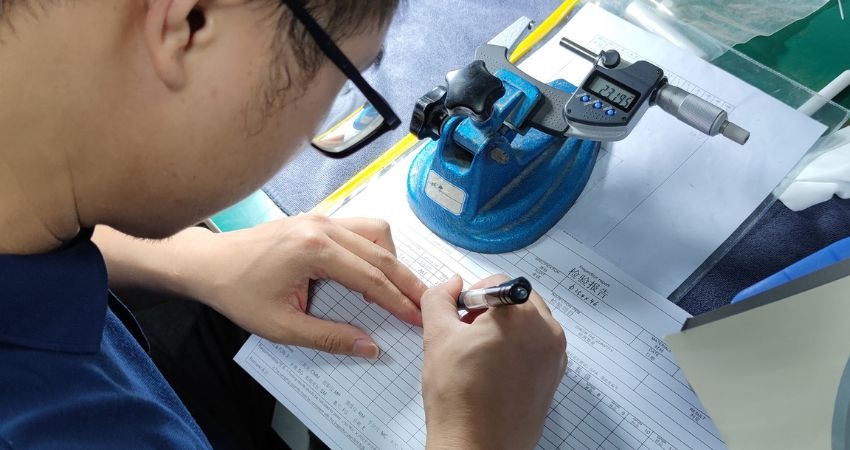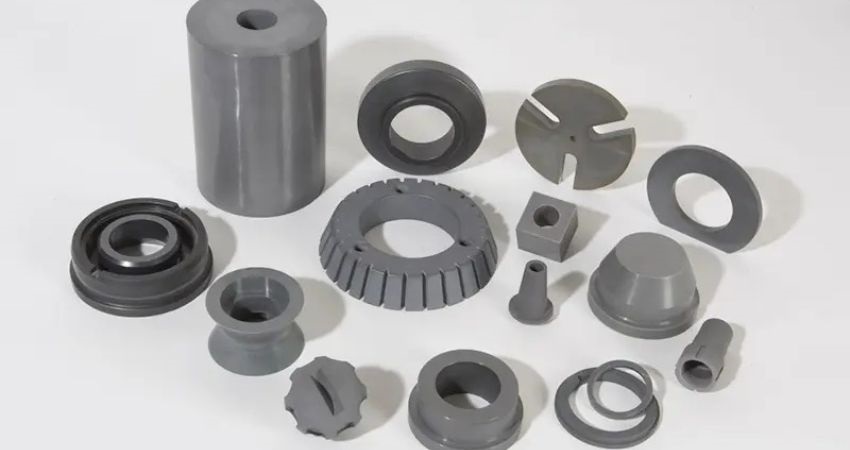Ceramic Sintering: The Science Behind High-Quality Ceramics
Introduction
Ceramic sintering is a critical process in modern manufacturing, playing an essential role in producing high-quality ceramic components. This article aims to provide a comprehensive overview of ceramic sintering, from its fundamental principles to its industrial applications. By exploring various aspects of the process, this article seeks to highlight the significance of ceramic sintering in today’s technological landscape.

What is Ceramic Sintering?
The Basics of Sintering
Sintering is a manufacturing process that transforms powdered materials into solid, dense objects. This is achieved by applying heat and sometimes pressure to compact the particles, causing them to bond without melting. The process results in materials with enhanced mechanical properties and structural integrity. Unlike other manufacturing methods, sintering allows for precise control over the microstructure of the material, making it ideal for high-performance applications.
The history of sintering dates back thousands of years, with early applications in metallurgy and ceramics. However, advancements in technology have significantly refined the process, allowing for more complex and specialized uses in various industries.
Types of Ceramic Sintering
Ceramic sintering can be categorized into several types based on the specific techniques used:
- Solid-State Sintering: This traditional method involves heating the ceramic powders below their melting point until they bond together.
- Liquid-Phase Sintering: In this process, a small amount of liquid is present during sintering, which helps to facilitate the bonding of the particles.
- Hybrid Sintering Methods: These methods combine elements of both solid-state and liquid-phase sintering to achieve optimal results for specific applications.
Key Materials Used in Ceramic Sintering
Common ceramics used in sintering include alumina, zirconia, and silicon carbide. These materials are selected for their unique properties, such as high temperature stability, corrosion resistance, and excellent mechanical strength. The choice of material depends on the intended application and the specific requirements of the final product.
Related resources:
Ceramic injection molding
The Ceramic Sintering Process
Powder Preparation
The first step in the sintering process is powder preparation. This involves selecting the raw materials and then grinding and milling them into fine powders. Homogenization techniques are used to ensure uniform particle size and composition. Environmental and safety considerations are also crucial during this stage, as the handling of fine powders can pose health risks.
Compaction and Shaping
Once the powders are prepared, they are compacted and shaped into the desired form. Methods such as pressing, extrusion, and injection molding are commonly used. Uniform compaction is vital to prevent defects and ensure the final product’s quality. Advanced tools and machinery aid in achieving precise shapes and dimensions.
Sintering Techniques
Conventional Sintering
Conventional sintering involves heating the compacted powders in a furnace to a specific temperature and maintaining it for a set period. This process allows the particles to bond and form a solid structure. While effective, conventional sintering can be energy-intensive and may not be suitable for all applications. Analyzing the cost and efficiency of this method is essential for determining its feasibility.
Advanced Sintering Techniques
- Hot Isostatic Pressing (HIP): This technique applies both heat and pressure uniformly, resulting in denser and more homogenous materials.
- Spark Plasma Sintering (SPS): SPS uses an electric current to rapidly heat the powders, reducing sintering time and energy consumption.
- Microwave Sintering: Microwave energy is used to heat the materials, offering faster and more uniform heating.
Comparing these advanced techniques with conventional sintering reveals their advantages in terms of efficiency, energy consumption, and material properties.
Post-Sintering Processes
After sintering, the ceramic components undergo machining and finishing to achieve the required specifications. Inspection and quality control are critical to ensure the absence of defects and meet industry standards. Common defects, such as cracks and porosity, are addressed through careful process control and advanced inspection techniques.

Applications and Advantages of Ceramic Sintering
Industrial Applications
Ceramic sintering is utilized in various industries, including automotive, aerospace, medical devices, and electronics. For example, sintered ceramics are used in engine components, turbine blades, medical implants, and semiconductor substrates. Emerging application areas, such as new energy and environmental technology, also benefit from the unique properties of sintered ceramics.
Advantages of Ceramic Sintering
The primary advantages of ceramic sintering include superior mechanical properties, high-temperature stability, and corrosion resistance. Additionally, the process allows for customization to meet specific application requirements. When compared to other forming technologies, such as metal injection molding and plastic injection molding, ceramic sintering often provides better performance in demanding environments.
Case Studies
Numerous success stories highlight the benefits of ceramic sintering. For instance, automotive manufacturers have reported significant improvements in engine efficiency and durability using sintered ceramic components. Customer feedback and testimonials further underscore the process’s effectiveness and reliability.
Challenges and Future Trends in Ceramic Sintering
Current Challenges
Despite its advantages, ceramic sintering faces challenges, such as high energy consumption and process complexity. Controlling the sintering process to prevent defects and achieve uniform properties can be difficult. Additionally, global supply chain and market dynamics impact the availability and cost of raw materials.
Innovations and Future Directions
Ongoing research aims to address these challenges through advancements in sintering technology. Nanotechnology, for example, offers the potential to enhance material properties and reduce energy consumption. Sustainable practices and energy-efficient methods are also being explored to minimize the environmental impact. Collaboration between industries and research institutions is driving innovation and expanding the applications of ceramic sintering.
Regulatory and Compliance Aspects
Compliance with industry standards and certifications, such as ISO standards, is crucial for ensuring product quality and safety. Different countries and regions have specific regulatory requirements that must be met. Staying informed about these regulations is essential for manufacturers operating in global markets.
Economic and Market Analysis
The global market for ceramic sintering is growing, driven by increasing demand in various industries. Market size and growth trends indicate a positive outlook for the technology. Analyzing market demand and forecasting future trends help manufacturers plan strategically and capitalize on emerging opportunities.
Conclusion
In summary, ceramic sintering is a vital process with wide-ranging applications and significant advantages. Its ability to produce high-quality, durable ceramic components makes it indispensable in modern manufacturing. As technology continues to advance, ceramic sintering will likely see even broader applications and greater efficiency. For potential customers, understanding the benefits and challenges of ceramic sintering is crucial for making informed decisions. The future of ceramic sintering looks promising, with ongoing innovations poised to further enhance its capabilities.



